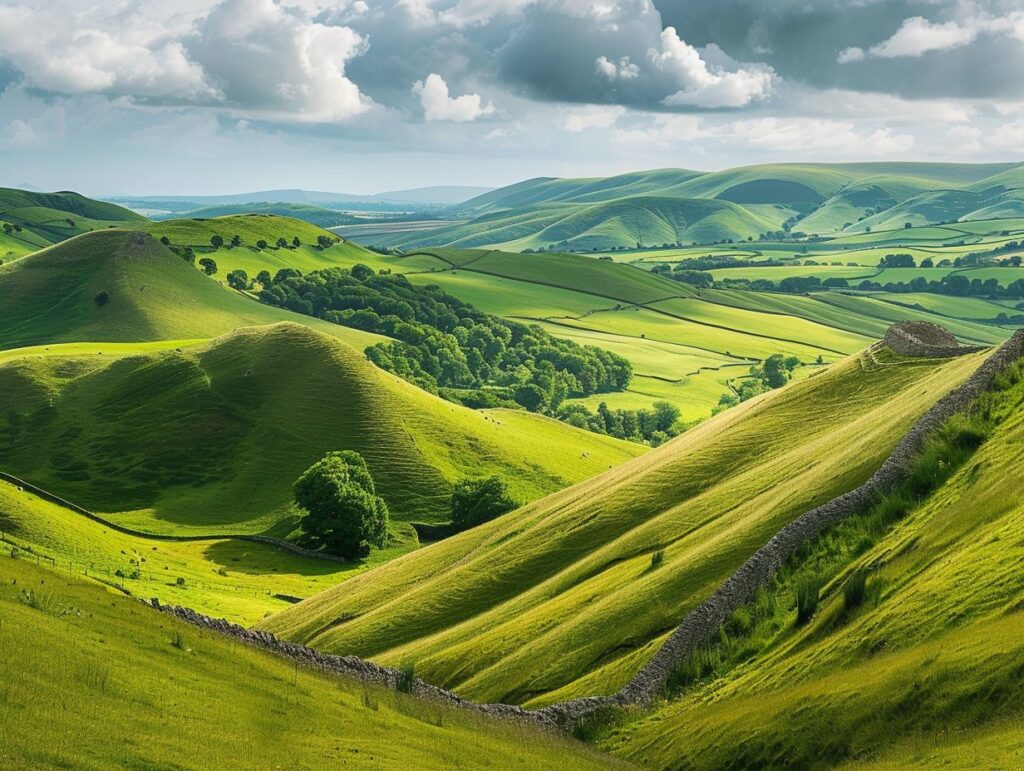Are you ready to lace up your hiking boots and explore the stunning landscapes of the Peak District?
This seasonal guide will take you through the best trails for spring, summer, fall, and winter hiking in this picturesque region.
From lush green valleys to snow-covered peaks, each season offers a unique experience for outdoor enthusiasts.
Get ready to learn tips and tricks for a safe and enjoyable hiking adventure in the Peak District.
Let’s hit the trails!
Key Takeaways:
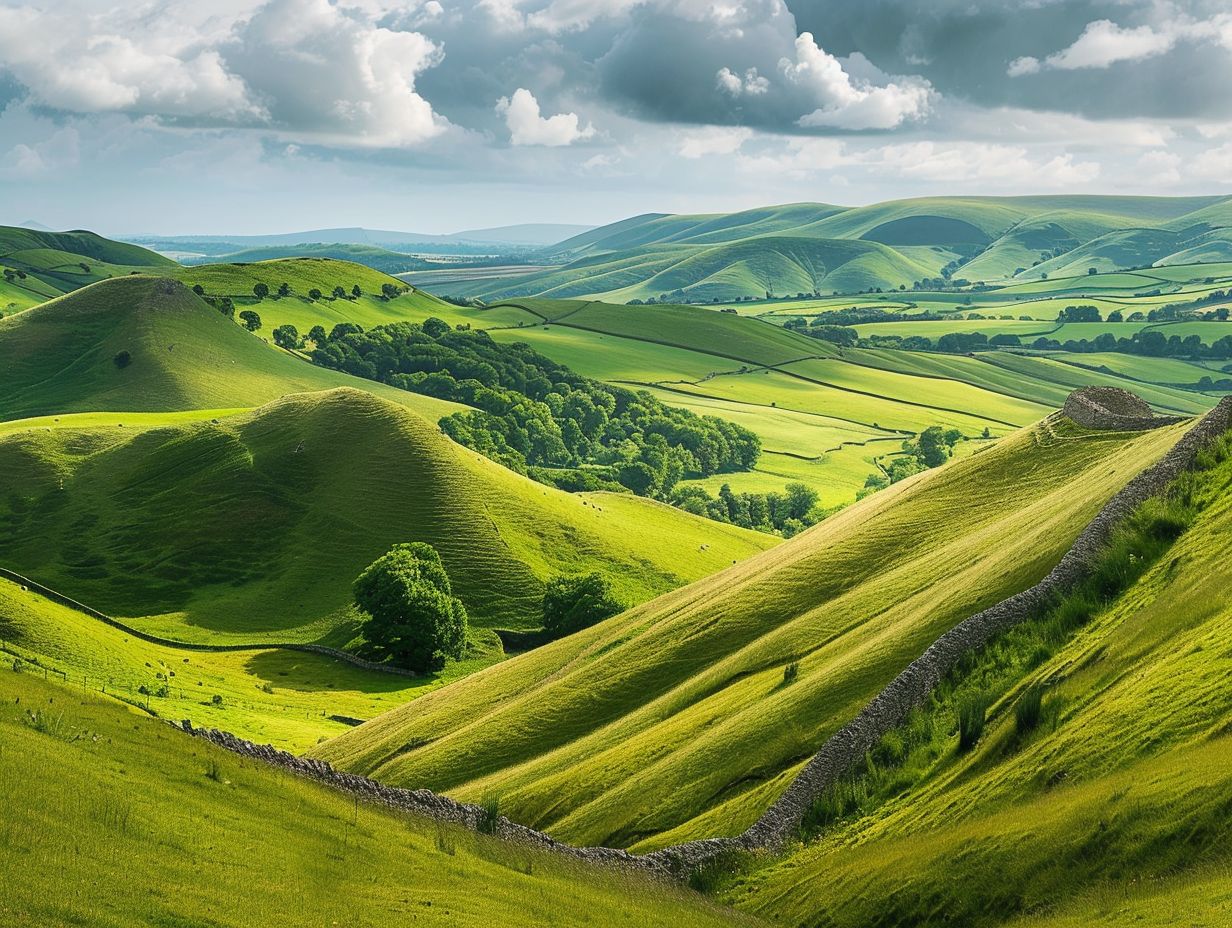
- Experience the stunning beauty of the Peak District during spring by hiking on trails such as the Dovedale and Stanage Edge.
- Beat the heat and admire the lush landscapes of the Peak District during summer by hiking on trails like the Mam Tor and Kinder Scout.
- Witness the breathtaking autumn colors of the Peak District on hikes such as the Edale Valley and Ladybower Reservoir.
Spring Hiking in the Peak District
During the spring season, hiking in the Peak District presents a revitalising experience, with the valleys and trails flourishing with blooming flowers and verdant greenery, rendering it an ideal destination for nature enthusiasts.
What are the Best Trails for Spring Hiking?
Some of the top trails recommended for spring hiking in the Peak District are Mam Tor, Padley Gorge, and Longshaw Estate.
Mam Tor stands out as a favoured choice among hikers due to its panoramic vistas of the surrounding landscapes during the ascent up its steep slopes. The trail leads through expansive grasslands and ancient stone pathways, offering insights into the area’s historical significance.
Conversely, Padley Gorge presents a fairytale-like setting characterised by moss-covered trees and meandering brooks, creating a whimsical ambiance. Hikers can discover charming waterfalls and remnants of old mill structures along this enchanting path.
Longshaw Estate features tranquil woodlands, colourful wildflowers, and a diverse array of wildlife, making it an idyllic location for a leisurely stroll amidst nature.
Summer Hiking in the Peak District
Summer hiking in the Peak District is characterised by a lively atmosphere, as extended daylight hours and elevated temperatures create optimal conditions for the exploration of the picturesque landscapes and the appreciation of panoramic vistas.
What are the Best Trails for Summer Hiking?
The top summer hiking trails in the Peak District are the challenging Kinder Scout, the iconic Stanage Edge, and the picturesque River Derwent. Kinder Scout is well-known for its rugged terrain and panoramic views, making it a favourite among experienced hikers seeking a demanding trek.
Stanage Edge’s distinct rock formations and expansive vistas attract rock climbers and photographers during the summer season. The River Derwent trail provides a tranquil experience with its meandering path through lush greenery and tranquil waters, making it a perfect choice for families and casual hikers looking to immerse themselves in the natural beauty of the Peak District.
Fall Hiking in the Peak District
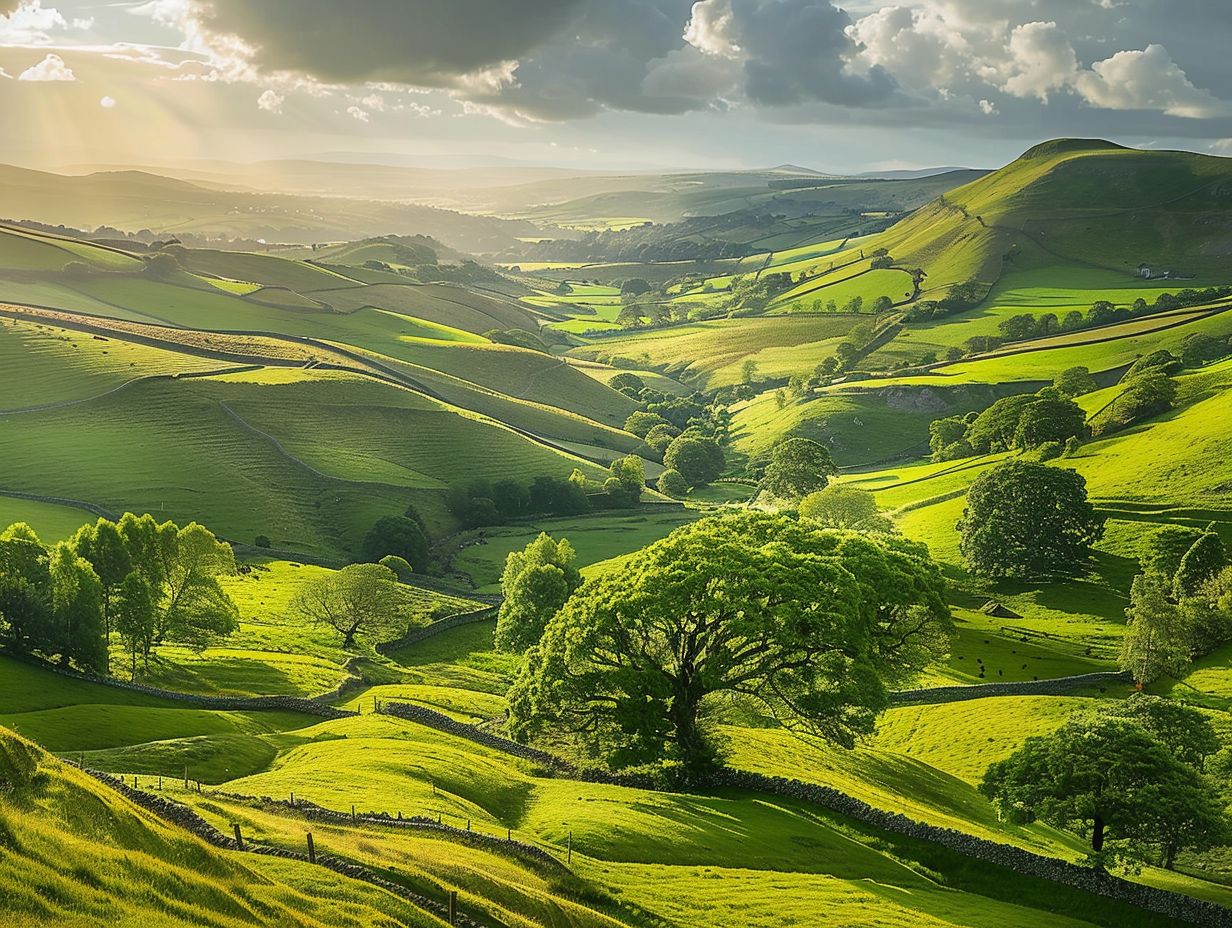
During the autumn season, hiking in the Peak District offers a magnificent display of vibrant colours, which effectively transforms the landscapes into a picturesque tapestry. This time of the year is particularly conducive to engaging in scenic walks and circular routes.
What are the Best Trails for Autumn Hiking?
For autumn hiking excursions, some of the finest trails within the Peak District encompass the venerable Chatsworth, the picturesque town of Bakewell, and the tranquil Cromford Canal.
The Chatsworth Estate not only presents outstanding hiking opportunities but also houses a respected historic building complemented by beautiful gardens waiting for exploration. Bakewell, famous for its delicious Bakewell pudding, offers scenic paths along the River Wye, along with chances to browse local markets and historic landmarks.
Meanwhile, the Cromford Canal, recognised as a UNESCO World Heritage Site, provides a peaceful escape with its calm waterside paths perfect for enjoying the autumnal foliage and engaging in birdwatching activities.
Additionally, autumn in these areas often includes harvest festivals, seasonal markets, and special events that honour the local culture.
Winter Hiking in the Peak District
Winter hiking in the Peak District offers a distinct experience, characterised by landscapes enveloped in snow and frost. The serene and tranquil setting amidst the colder temperatures provides a unique opportunity for individuals seeking a peaceful outdoor adventure.
What are the Best Trails for Winter Hiking?
The top recommendations for winter hiking in the Peak District include the picturesque Monsal Trail, the idyllic village of Hartington, and the historic Sutton Scarsdale Hall.
Winter hiking in the Peak District presents a unique opportunity to experience the breathtaking landscapes enveloped in snow, creating a tranquil and peaceful ambiance. Along the Monsal Trail, hikers can take in the snow-clad limestone dales and traverse through old railway tunnels, enhancing the journey with a touch of enchantment.
In Hartington, the village emanates a winter charm with its inviting cafes and pubs where hikers can seek solace in a hot beverage or a hearty meal after a day of exploration. The striking architecture of Sutton Scarsdale Hall, set against a winter landscape, offers a mesmerising spectacle for visitors.
Visitor centres and clearly marked trails ensure that winter hiking in these regions is accessible and enjoyable for outdoor enthusiasts.
Tips for Hiking in the Peak District
Taking part in hiking activities in the Peak District can prove to be a fulfilling experience provided that appropriate preparations are made and essential safety measures are taken into account, thus ensuring a secure and enjoyable expedition.
1. Wear Appropriate Clothing and Footwear
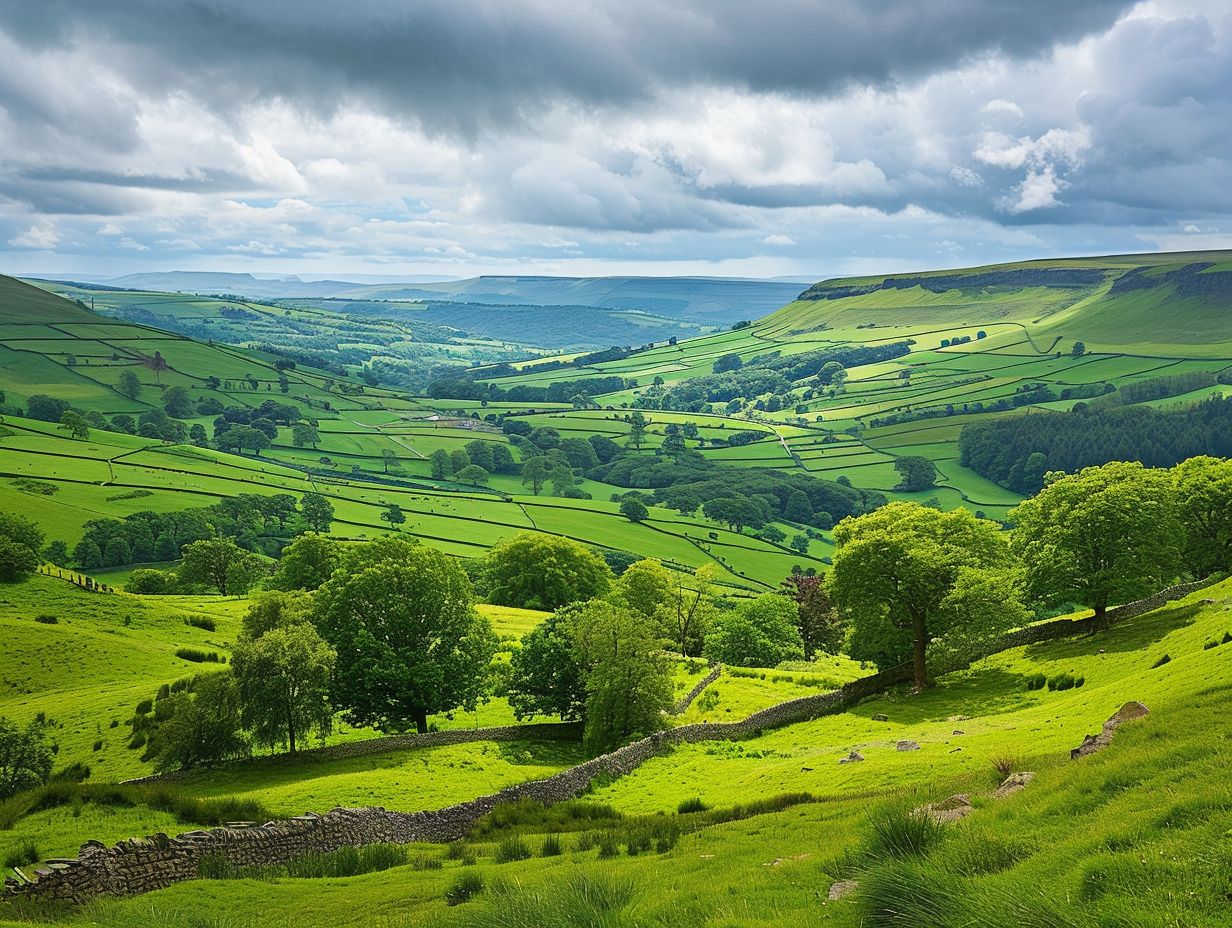
Proper attire is essential when hiking in the Peak District, as it plays a critical role in ensuring comfort and safety while traversing diverse terrains and facing various weather conditions.
In warmer seasons, it is advisable to opt for lightweight, breathable clothing such as moisture-wicking tops and quick-drying shorts or trousers.
Additionally, incorporating layers like a fleece or windcheater is crucial for adapting to cooler temperatures, especially during brisk mornings or at higher altitudes. During periods of rainfall, equipping oneself with a waterproof jacket and trousers becomes imperative to maintain dryness and overall comfort.
In terms of footwear, sturdy hiking boots featuring adequate ankle support and grip are essential for manoeuvring through rugged trails. Furthermore, it is recommended to wear moisture-wicking socks to mitigate the risk of blisters and ensure optimal comfort throughout extended hiking excursions.
2. Bring Plenty of Water and Snacks
It is imperative to bring an ample supply of water and nutritious snacks to maintain hydration and energy levels during a hike in the Peak District.
Choosing lightweight and nutrient-rich snacks such as trail mix, energy bars, or dried fruits can offer a swift energy boost without causing a burden. It is advisable to pack snacks that are rich in complex carbohydrates and protein to sustain energy levels throughout the duration of the hike.
Additionally, carrying a reusable water bottle or hydration pack is essential to ensure a sufficient water supply, particularly on longer hikes where access to refill stations might be limited.
Maintaining proper hydration and nourishing your body with wholesome snacks can significantly enhance the enjoyment and success of your outdoor excursion.
3. Be Aware of the Wildlife and Terrain
Having a good understanding of the wildlife and terrain in the Peak District is essential for ensuring a safe and enjoyable hiking experience while minimising accidents and disturbances to the natural environment.
Within the Peak District, hikers can expect to encounter a diverse array of wildlife, ranging from the elusive red deer and native bird species to smaller creatures such as rabbits and insects. It is imperative to maintain a respectful distance from these animals, refraining from feeding or approaching them to ensure both their safety and personal well-being.
In terms of terrain, the Peak District presents a variety of landscapes, including rolling hills, rocky crags, and moorlands. To navigate these terrains securely, it is advisable to carry a map and compass at all times, wear suitable footwear, and be prepared for abrupt changes in weather conditions.
4. Tell Someone Your Hiking Plans
Informing someone of your hiking plans is a straightforward yet essential safety precaution, ensuring that there is knowledge of your whereabouts and anticipated return time in the event of emergencies. This communication protocol holds significant value, particularly when undertaking solo hikes or venturing into isolated regions.
Notifying a trusted individual, family member, or park authorities with comprehensive information such as your intended route, estimated duration, and contact particulars can expedite response times in the event of unforeseen difficulties.
Employing trail registers or hiking applications to document your schedule and check-in at multiple intervals during your expedition can furnish an additional stratum of security and reassurance.
5. Bring a Map and Compass
It is crucial to bring a map and compass when hiking in the Peak District to facilitate navigation, aiding in staying on course and navigating through unfamiliar terrain. These conventional navigation instruments act as reliable backups should digital devices malfunction, particularly in remote areas where GPS signals might be unreliable or inaccessible.
To utilise a map and compass effectively, the initial step involves orienting the map to align with the surroundings, followed by identifying landmarks and mapping out the route accordingly. When using a compass, it is essential to adjust for declination to ensure accurate readings. Regular practice with these tools can strengthen confidence and enhance outdoor navigation skills.
Frequently Asked Questions
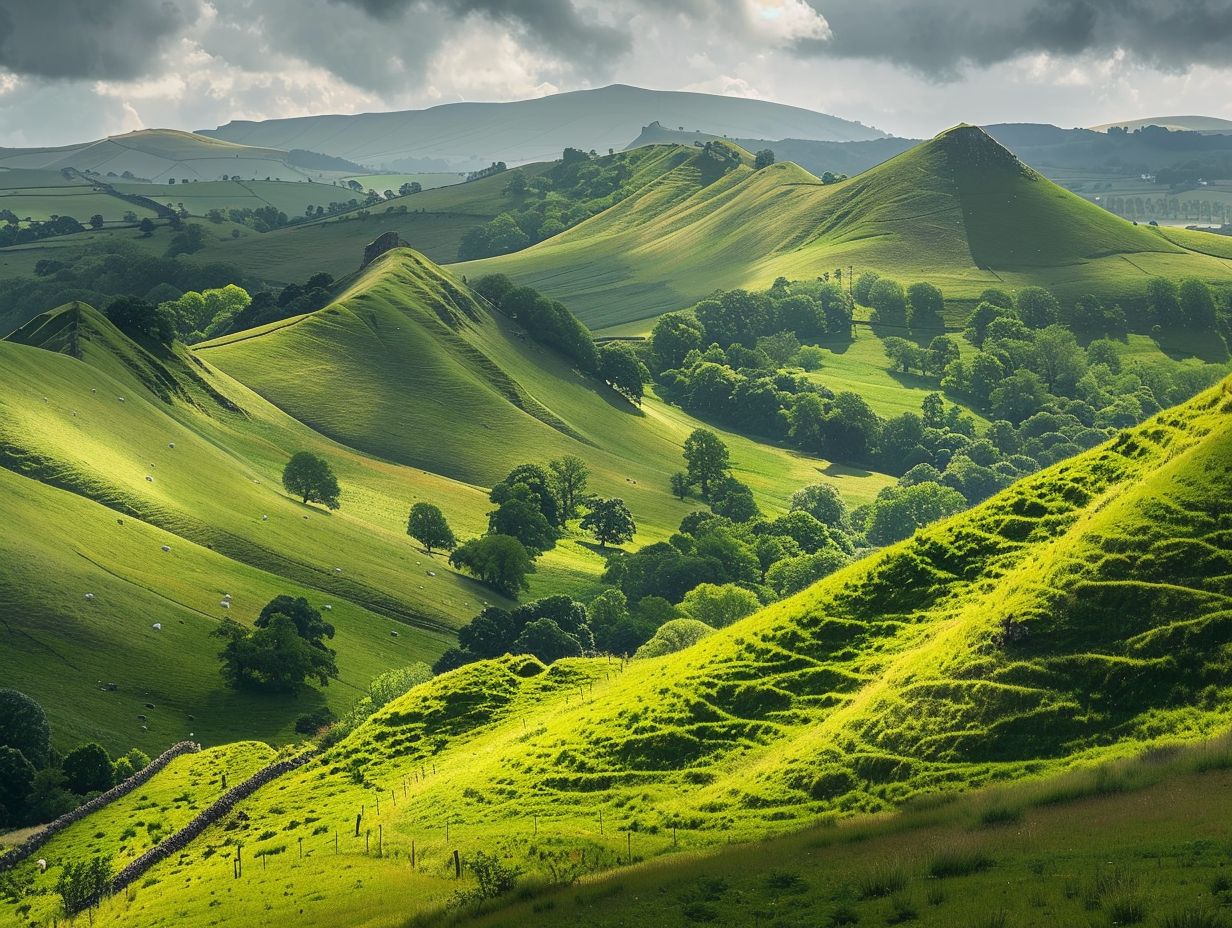
What is the best time of year to go hiking in the Peak District?
The best time to go hiking in the Peak District is during the spring and autumn seasons. These months offer mild temperatures and beautiful foliage, making for a comfortable and scenic hiking experience.
What kind of gear do I need for hiking in the Peak District?
Proper gear is essential for a successful hike in the Peak District. You will need sturdy hiking boots, layers of clothing, a waterproof jacket, a map, a compass, and plenty of water and snacks.
Are there any guided hiking tours available in the Peak District?
Yes, there are several guided hiking tours available in the Peak District. These tours are led by experienced guides who are familiar with the area and can provide valuable information about the local flora and fauna.
What should I know about safety when hiking in the Peak District?
It is important to always be prepared and aware of your surroundings when hiking in the Peak District. Make sure to check the weather forecast, follow designated trails, and let someone know your hiking plans. It is also recommended to carry a first aid kit and a charged phone for emergencies.
Are there any restrictions or permits required for hiking in the Peak District?
There are no permits required for hiking in the Peak District, but there are a few restrictions to keep in mind. Some areas may have seasonal closures or restrictions for conservation purposes, so it is important to check before your hike. Additionally, be respectful of private property and follow the countryside code.
What are some recommended hiking trails in the Peak District?
The Peak District offers a variety of hiking trails for all levels of experience. Some popular options include Kinder Scout, Mam Tor, and Dovedale. You can also find many circular walks that offer stunning views of the surrounding countryside.

